Numerical Analysis of the Seismic Behavior of a Steel Beam-to-Concrete-Filled Steel Tubular Column Connection Using External Diaphragms
Abstract
:1. Introduction
2. Materials and Methods
2.1. Description of the Connection
2.2. Description of the Experimental Procedure
2.3. Description of the Model
2.3.1. Geometry Domain
2.3.2. Domain Discretization
2.3.3. Boundary Conditions
2.3.4. Material Model
2.3.5. Model Simplification
3. Results and Discussion
3.1. Description of the Connection
3.2. Plastification Mechanism
3.3. Monotonic Test
3.4. Model Simplification in the First Stage
3.5. Model Simplification in the Second Stage
3.6. Parametric Study
4. Conclusions
Author Contributions
Funding
Informed Consent Statement
Data Availability Statement
Acknowledgments
Conflicts of Interest
References
- Hamburger, R.O.; Krawinkler, H.; Malley, J.O.; Scott, M.A. Seismic Design of Steel Special Moment Frames: A Guide for Practicing Engineers. NEHRP Seism. Des. Tech. Brief 2009, 2, 37. Available online: http://www.nehrp.nist.gov/pdf/nistgcr9-917-3.pdf (accessed on 4 June 2022).
- Andrade, C. Steel I-Beam Connections Qualification Connected to Column Weak Axis. Master’s Thesis, Universidad Nacional de Colombia, Bogotá, Colombia, 2015. [Google Scholar]
- Bustamante, A. Qualification of a Composite Tubular PRM Connection. Undergraduate Thesis, Universidad EIA, Envigado, Colombia, 2016. [Google Scholar]
- Ceron, C. Prequalification of a Beam-Column Moment Welded Connection with Dog Bone Section Reduction in the Beam for Metal Buildings under the Action of Dynamic Loading. Master’s Thesis, Universidad del Valle, Cali, Colombia, 2011. [Google Scholar]
- Cheng, C.-T.; Chung, L.-L. Seismic performance of steel beams to concrete-filled steel tubular column connections. J. Constr. Steel Res. 2003, 59, 405–426. [Google Scholar] [CrossRef]
- Ramirez, C. Analysis of the Inelastic Behavior of a Double T Connection—HSS Column to Cyclic Loads from Numerical Analysis and Experimental Test. Master’s Thesis, Universidad del Valle, Cali, Colombia, 2019. [Google Scholar]
- Schneider, S.P.; Alostaz, Y.M. Experimental Behavior of Connections to Concrete-filled Steel Tubes. J. Constr. Steel Res. 1998, 45, 321–352. [Google Scholar] [CrossRef]
- Sheet, I.S.; Gunasekaran, U.; MacRae, G.A. Experimental investigation of CFT column to steel beam connections under cyclic loading. J. Constr. Steel Res. 2013, 86, 167–182. [Google Scholar] [CrossRef]
- Shin, K.-J.; Kim, Y.-J.; Oh, Y.-S.; Moon, T.-S. Behavior of welded CFT column to H-beam connections with external stiffeners. Eng. Struct. 2004, 26, 1877–1887. [Google Scholar] [CrossRef]
- Torres, C. Qualification of a Rigid Metal Connection I Beam—Composite Column. Master’s Thesis, Universidad Industrial de Santander, Bucaramanga, Colombia, 2012. [Google Scholar]
- Vallejo, M.U.; Valencia Clement, G.F. Evaluating a Steel Beam’s Rigid Connection to a Concrete Filled Tubular Column when Submitted to Dynamic Load. Ing. Investig. 2009, 29, 24–34. [Google Scholar]
- Federal Emergency Management Agency (FEMA). FEMA 350—Recommended Seismic Design Criteria for New Steel Moment-Frame Buildings; FEMA: Washington, DC, USA, 2000; p. 302.
- Federal Emergency Management Agency (FEMA). FEMA 355D State of the Art Report on Connection Performance FEMA; Constructional Steel Research; FEMA: Washington, DC, USA, 2000; pp. 1–305.
- American Institute of Steel and Construction (AISC). AISC 358-16 Prequalified Connections for Special and Intermediate Steel Moment Frames for Seismic Applications; AISC: Chicago, IL, USA, 2016.
- American Institute of Steel and Construction (AISC). AISC 341-16 Seismic Provisions for Structural Steel Buildings; AISC: Chicago, IL, USA, 2016.
- American Institute of Steel and Construction (AISC). AISC 360 Specification for Structural Steel Buildings; AISC: Chicago, IL, USA, 2016.
- Li, W.; Xu, L.-F.; Qian, W.-W. Seismic performance of concrete-encased CFST column to steel beam joints with different connection details. Eng. Struct. 2019, 204, 109875. [Google Scholar] [CrossRef]
- Wang, Z.-B.; Tao, Z.; Li, D.-S.; Han, L.-H. Cyclic behaviour of novel blind bolted joints with different stiffening elements. Thin-Walled Struct. 2016, 101, 157–168. [Google Scholar] [CrossRef]
- Ramirez, C.; Palma, G.A.; Gutierrez, A.D.; Ramirez, J.L.; Cano, R.E.; Gonzales, L.F. Seismic Behavior of a Steel Beam-to-Concrete-Filled Steel Tubular Column Connection Using External Diaphragms. Appl. Sci. 2022, 12, 3618. [Google Scholar] [CrossRef]
- Wu, L.; Chung, L.; Tsai, S.; Sheng, T.; Huang, G. Seismic Behavior of Bolted Beam to Column Connections for Concrete Filled Steel Tube. J. Constr. Steel Res. 2005, 61, 1387–1440. [Google Scholar] [CrossRef]
- Li, X.; Xiao, Y.; Wu, Y. Seismic behavior of exterior connections with steel beams bolted to CFT columns. J. Constr. Steel Res. 2009, 65, 1438–1446. [Google Scholar] [CrossRef]
- Tao, Z.; Li, W.; Shi, B.-L.; Han, L.-H. Behaviour of bolted end-plate connections to concrete-filled steel columns. J. Constr. Steel Res. 2017, 134, 194–208. [Google Scholar] [CrossRef]
- Xu, T.; Zheng, D.; Yang, C.; Deng, K. Seismic performance evaluation of damage tolerant steel frame with composite steel-UHPC joint. J. Constr. Steel Res. 2018, 148, 457–468. [Google Scholar] [CrossRef]
- Wu, C.; Yu, S.; Liu, J.; Chen, G. Development and testing of hybrid precast steel-reinforced concrete column-to- H shape steel beam connections under cyclic loading. Eng. Struct. 2020, 211, 110460. [Google Scholar] [CrossRef]
- Rong, B.; Li, H.; Zhang, R. Experimental and Numerical Investigations on Seismic Performance of CFST Frame with External Diaphragm Joint. J. Struct. Eng. 2021, 147, 04021182. [Google Scholar] [CrossRef]
- Mou, B.; Liu, X.; Sun, Z. Seismic behavior of a novel beam to reinforced concrete-filled steel tube column joint. J. Constr. Steel Res. 2021, 187, 106931. [Google Scholar] [CrossRef]
- Li, B.; Yang, Y.; Liu, J.; Liu, X.; Cheng, Y.; Chen, Y.F. Behavior of T-shaped CFST column to steel beam connection with U-shaped diaphragm. J. Build. Eng. 2021, 43, 102518. [Google Scholar] [CrossRef]
- ASTM International. ASTM E8/E8M—16a: Standard Test Methods for Tension Testing of Metallic Materials; ASTM International: West Conshohocken, PA, USA, 2016. [Google Scholar] [CrossRef]
- ANSYS, Inc. ANSYS Mechanical APDL Theory Reference; ANSYS, Inc.: Canonsburg, PA, USA, 2013. [Google Scholar]
- Kim, T.S.; Kuwamura, H. Finite Element Modeling of Bolted Connections in Thin-Walled Stainless Steel Plates Under Static Shear. Thin-Walled Struct. 2007, 45, 407–421. [Google Scholar] [CrossRef]
- American Institute of Steel and Construction (AISC), Research Council on Structural Connections (RCSC). Specification for Structural Joints Using High-Strength Bolts; AISC: Chicago, IL, USA, 2020.
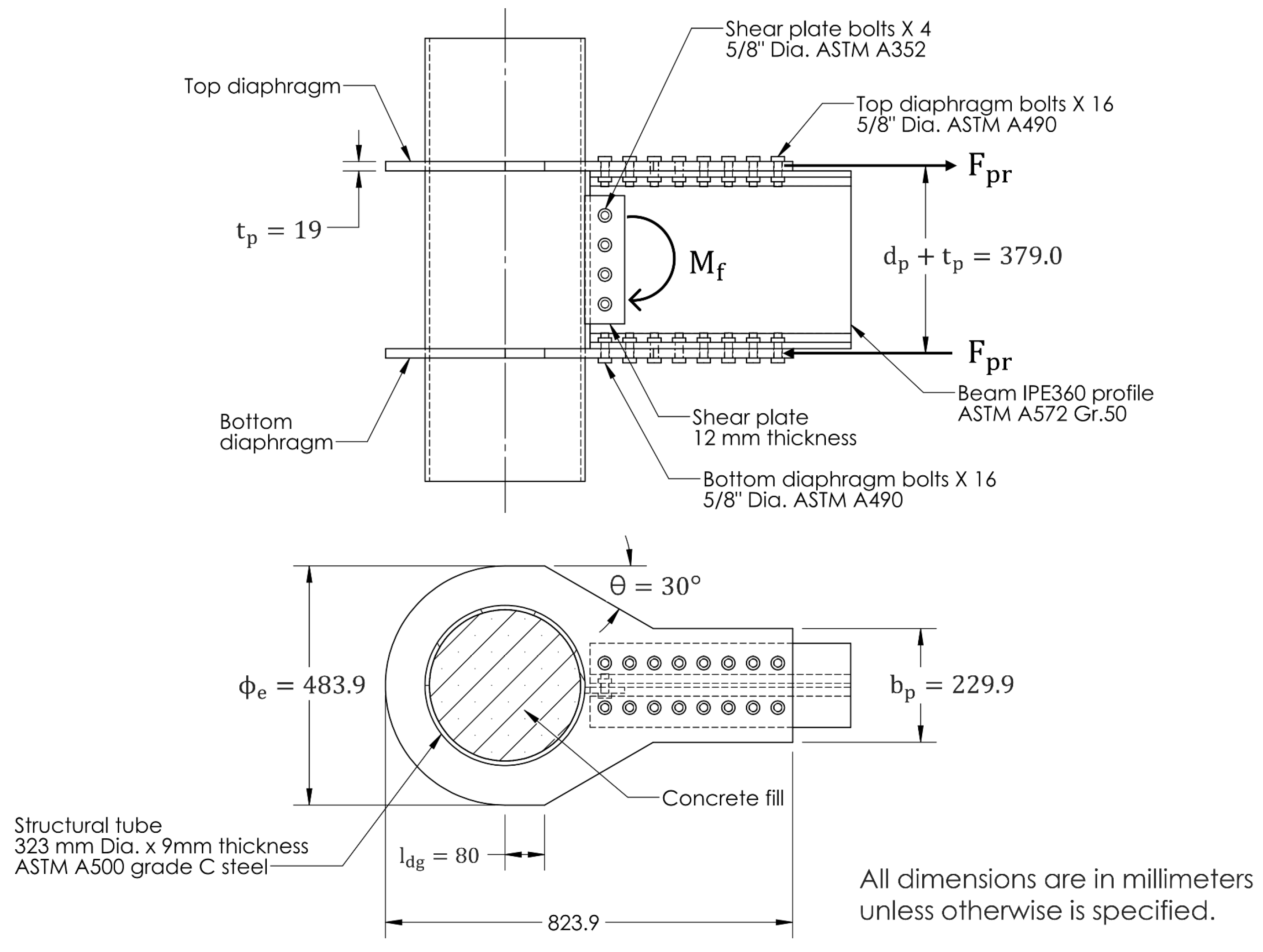
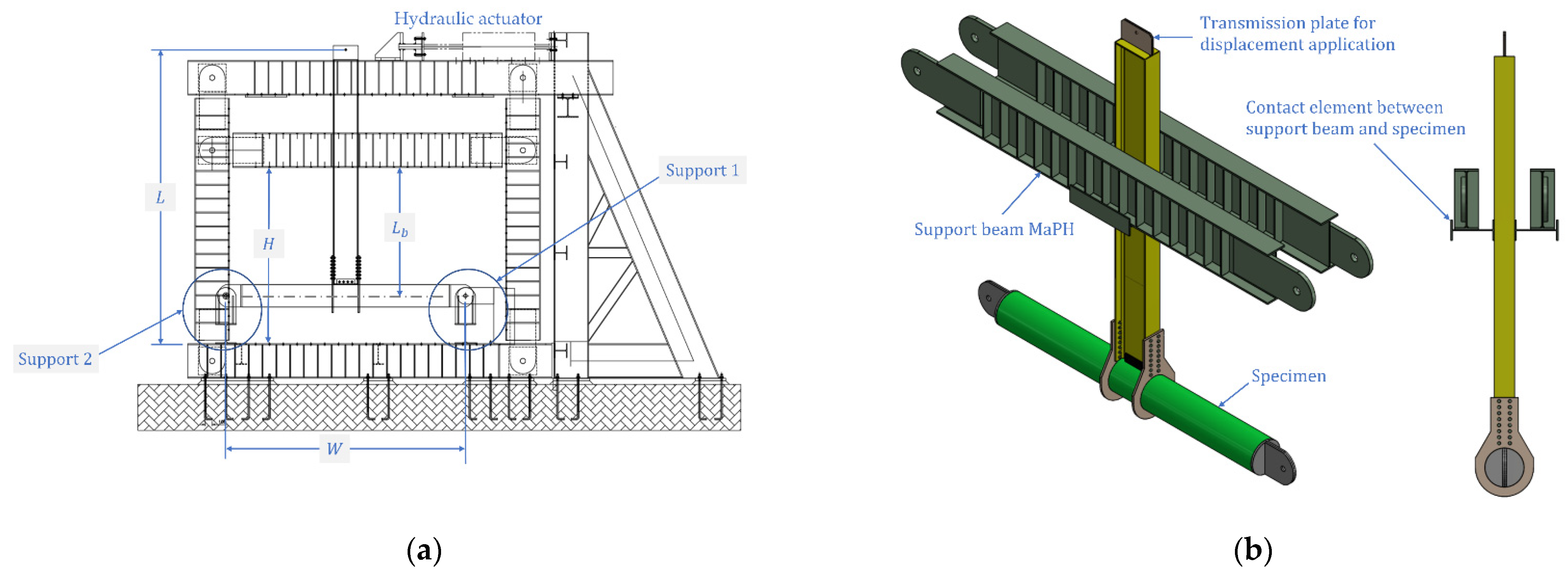

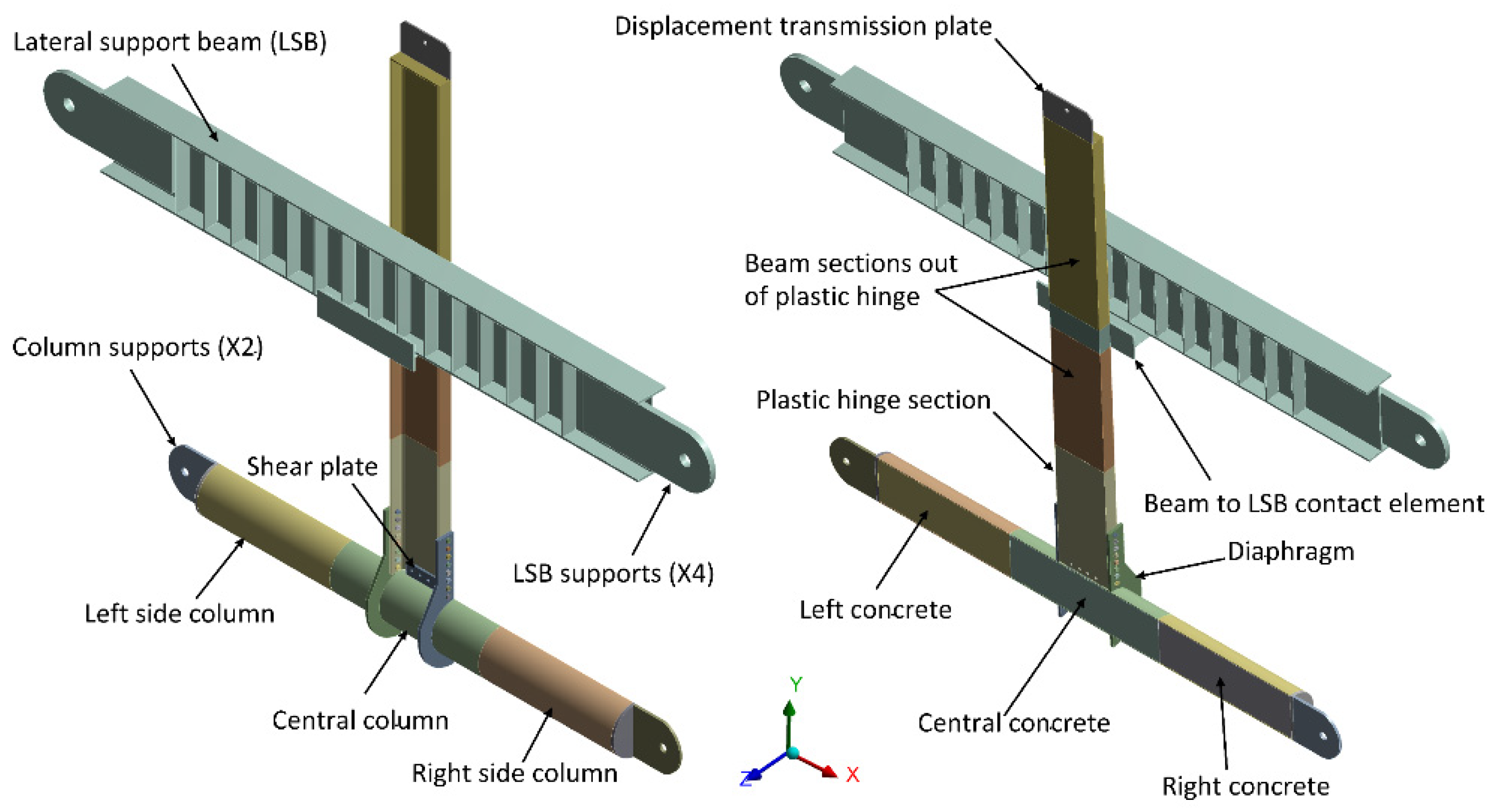
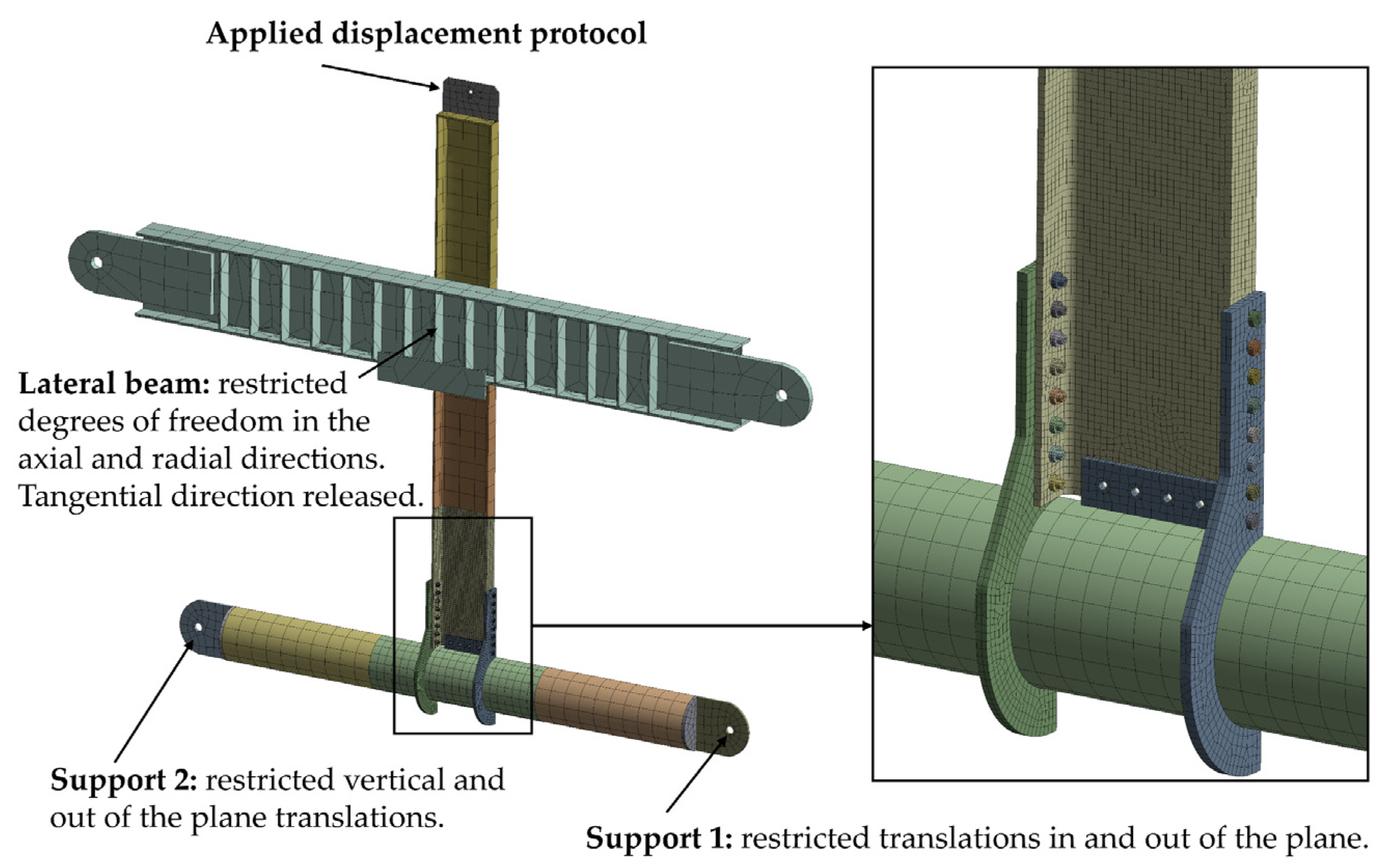
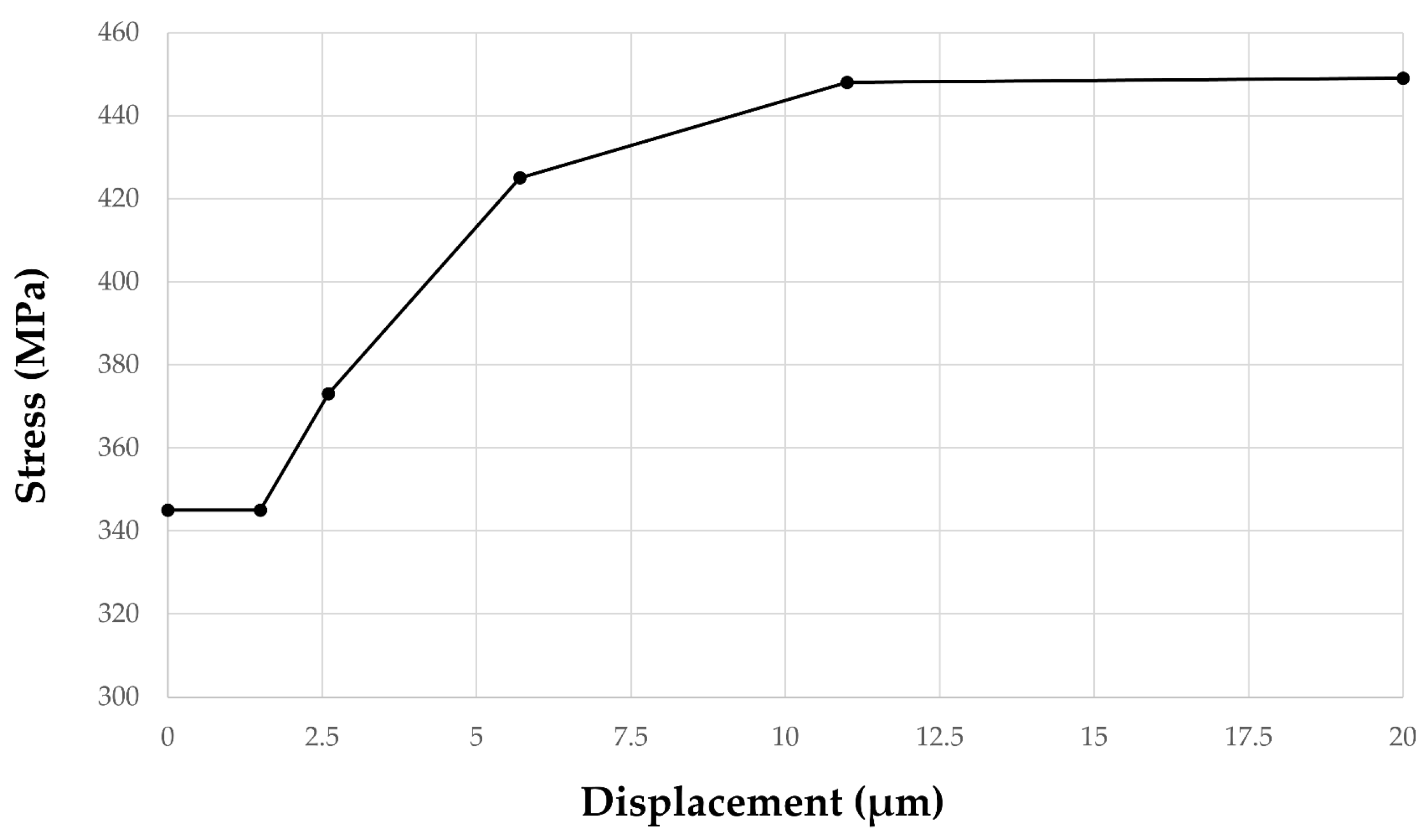
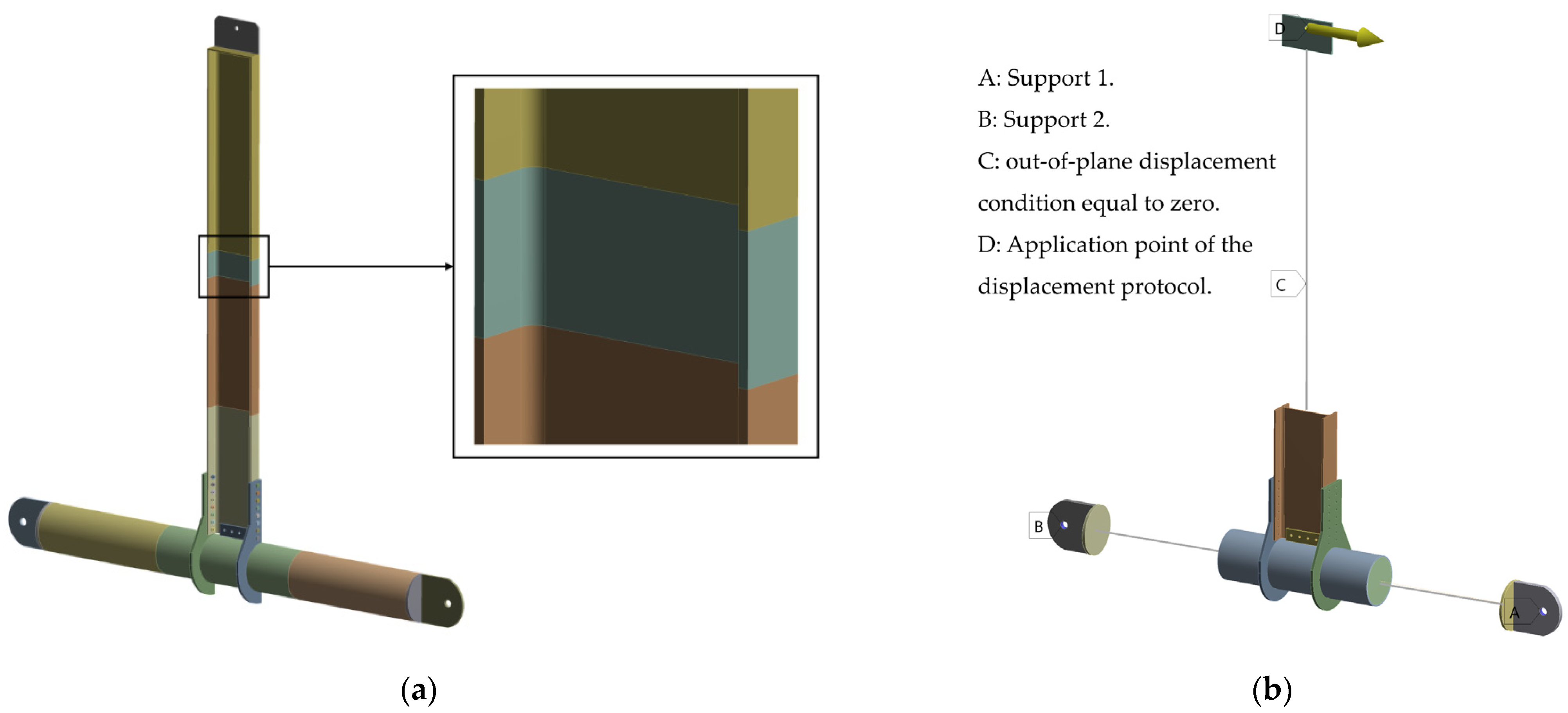
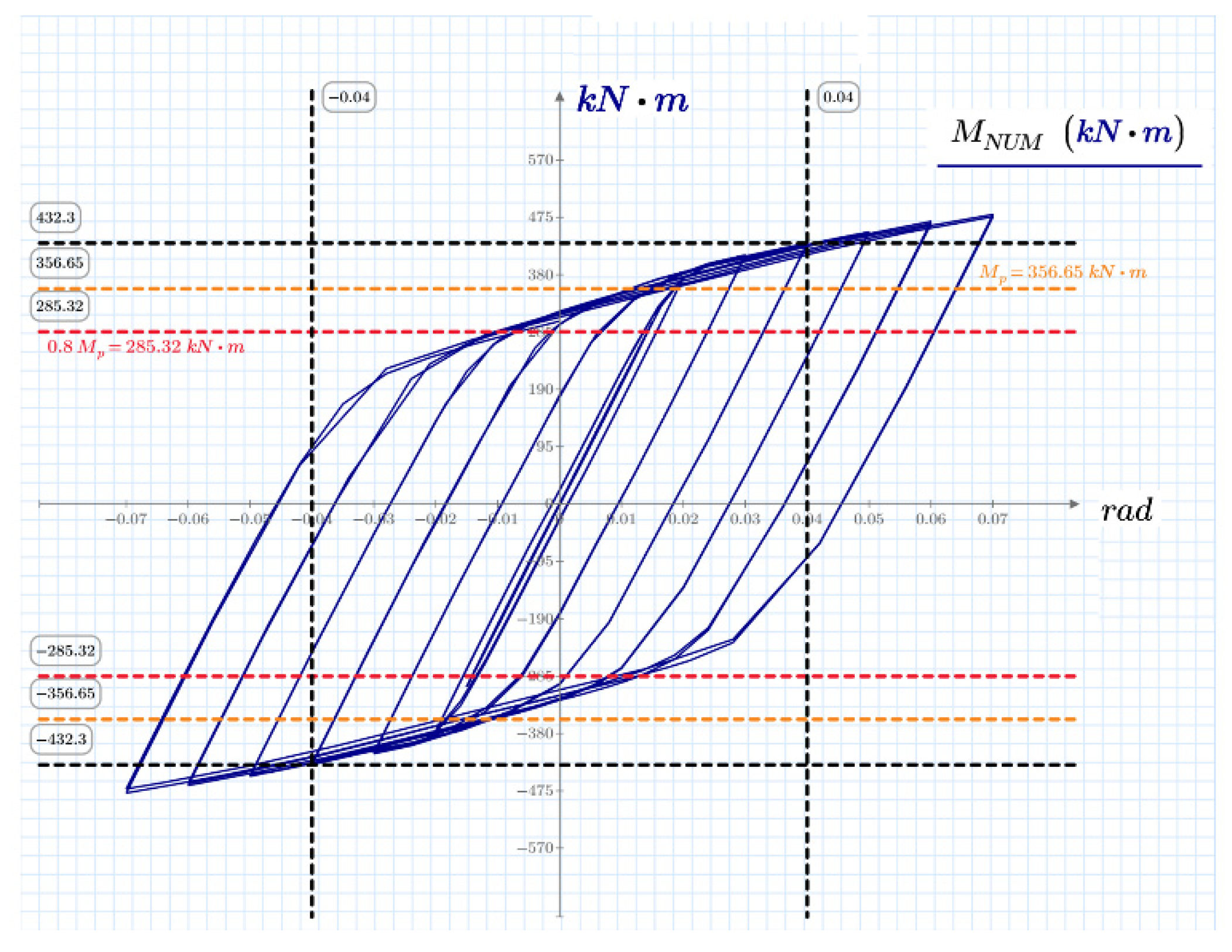

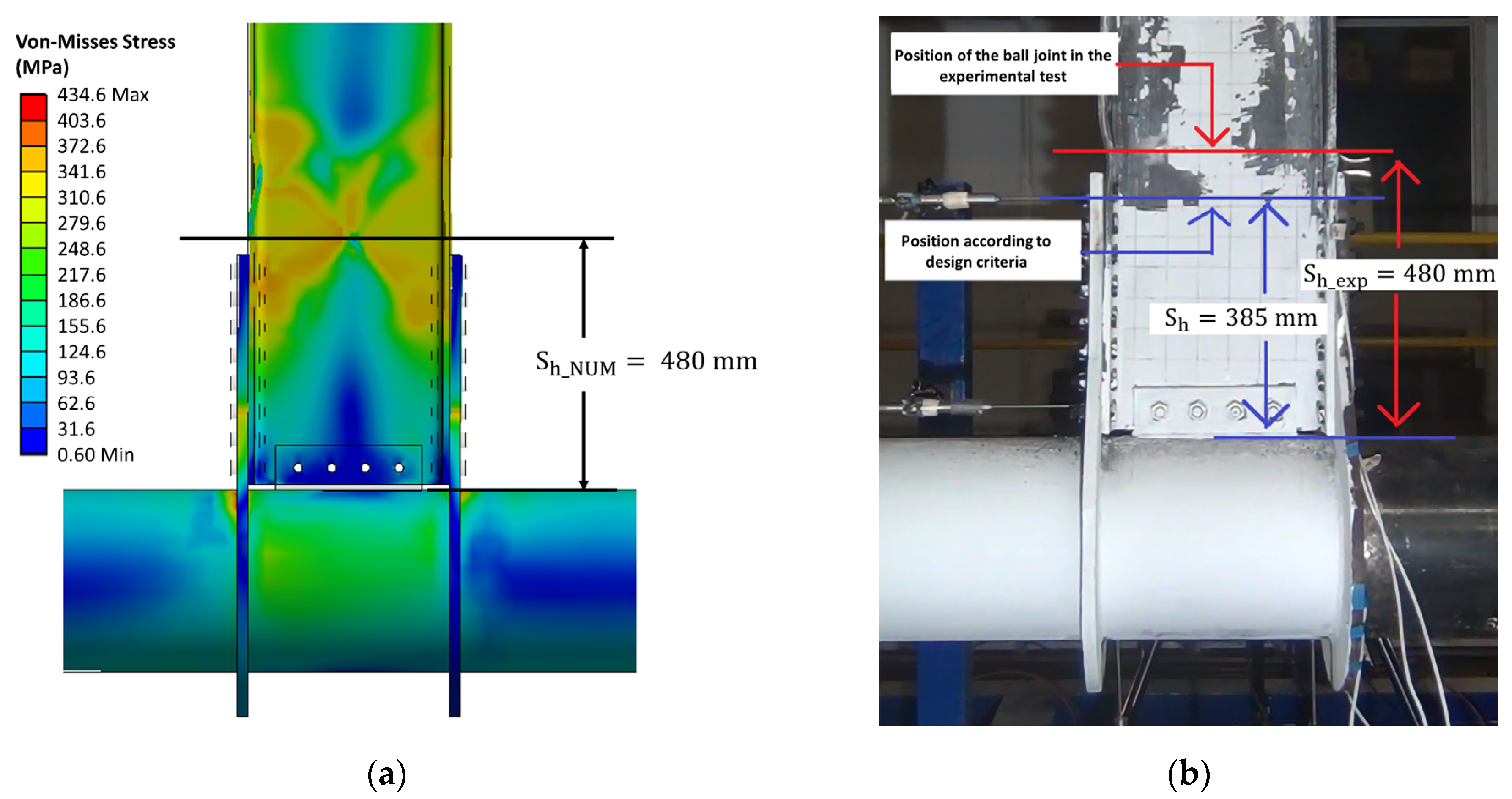
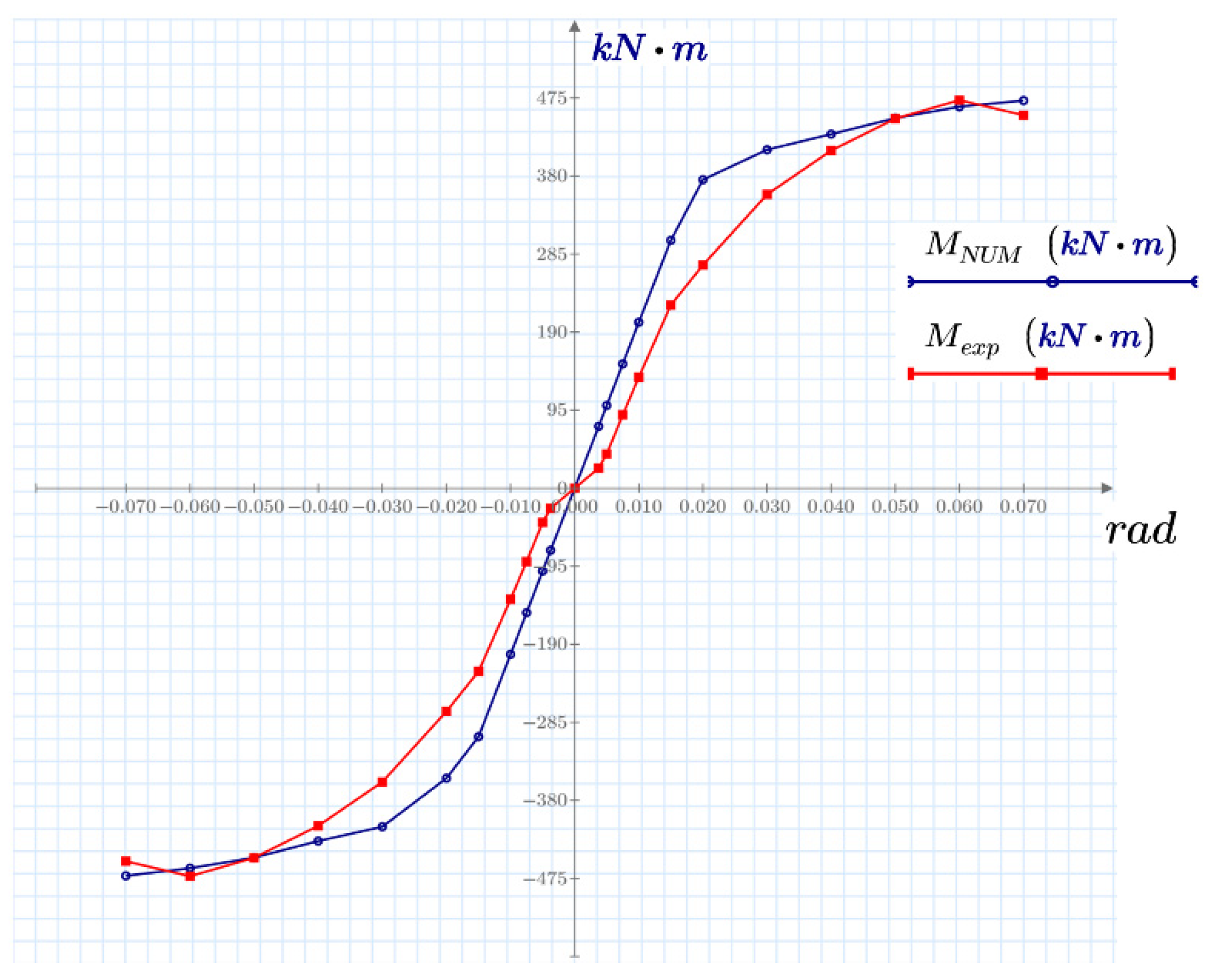
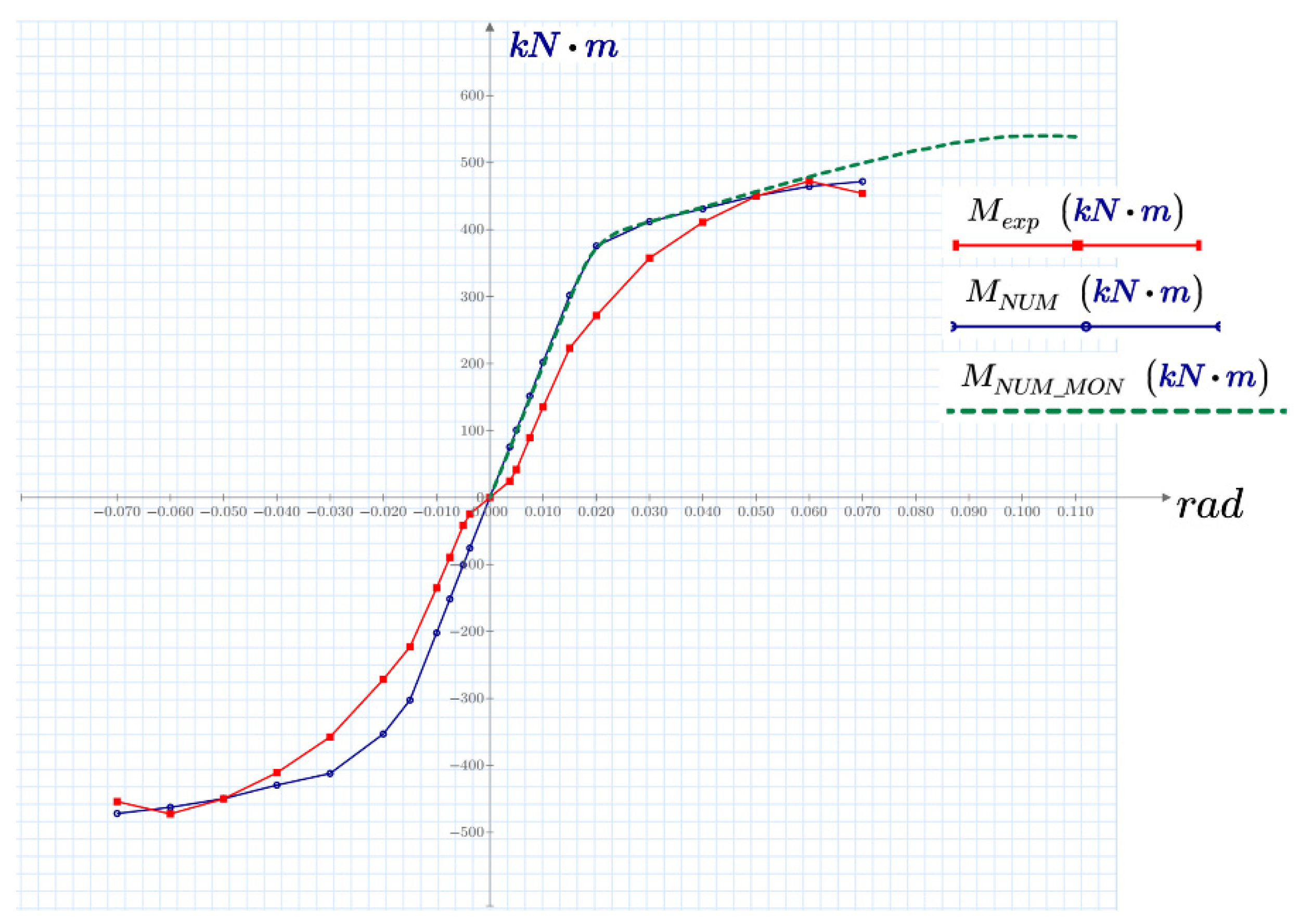

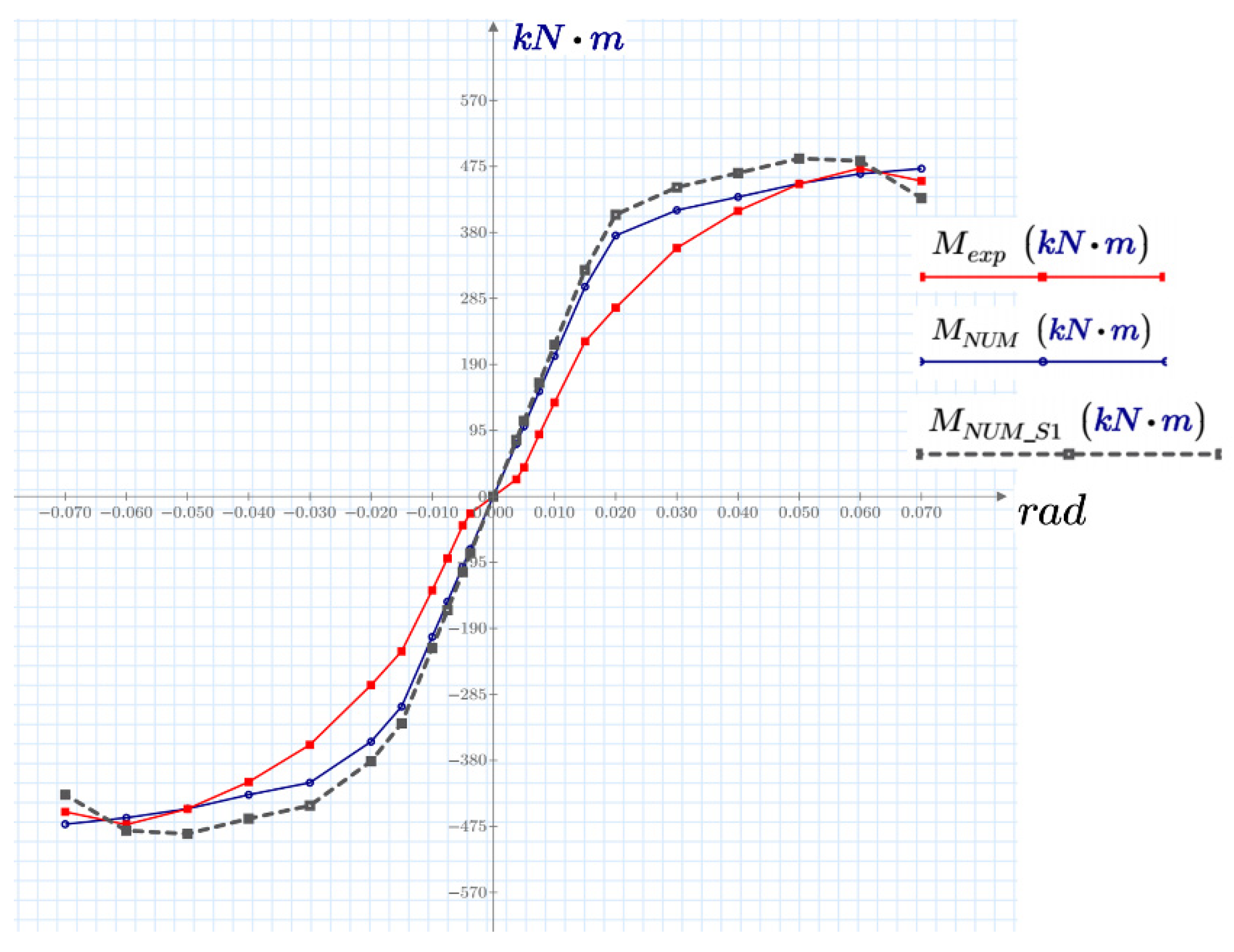
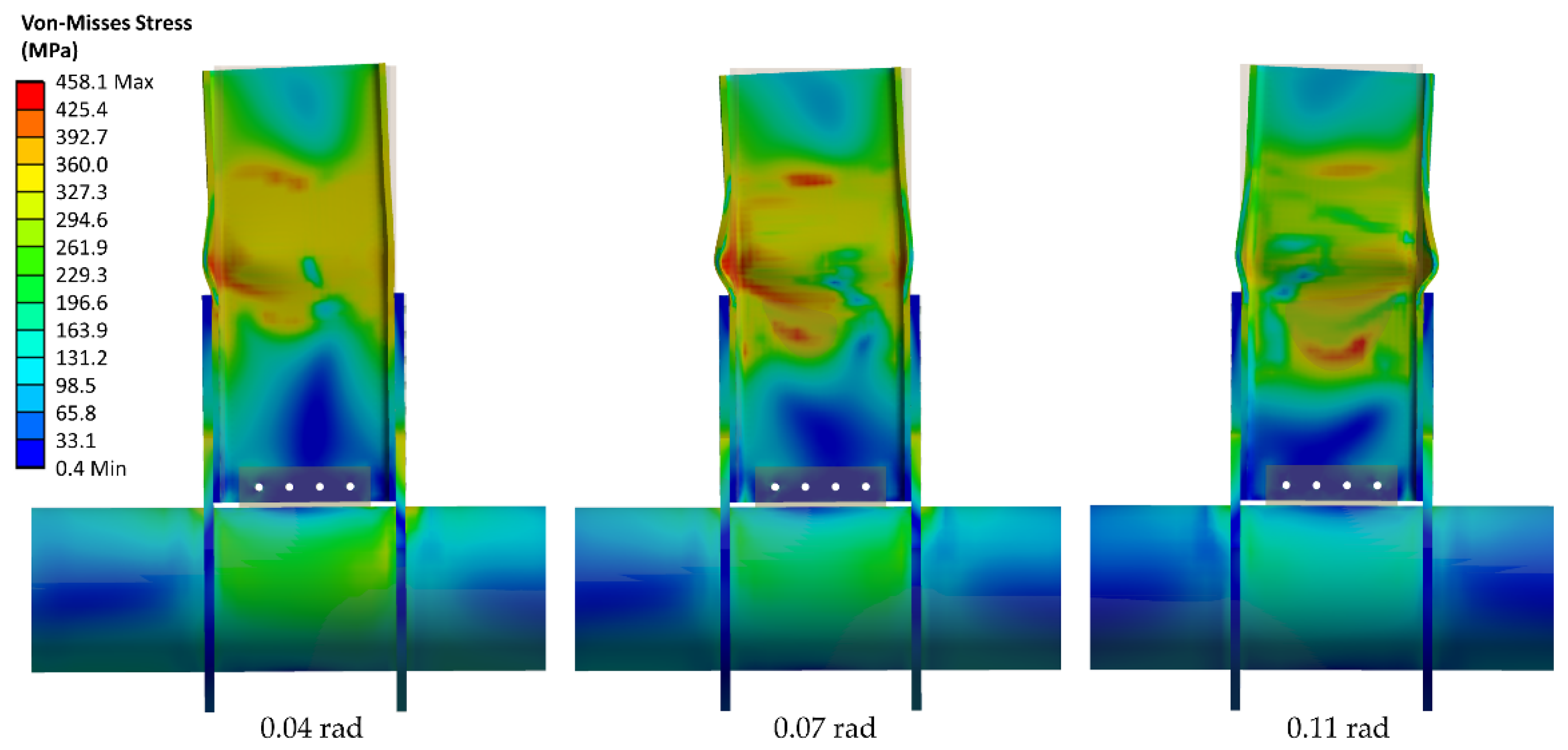
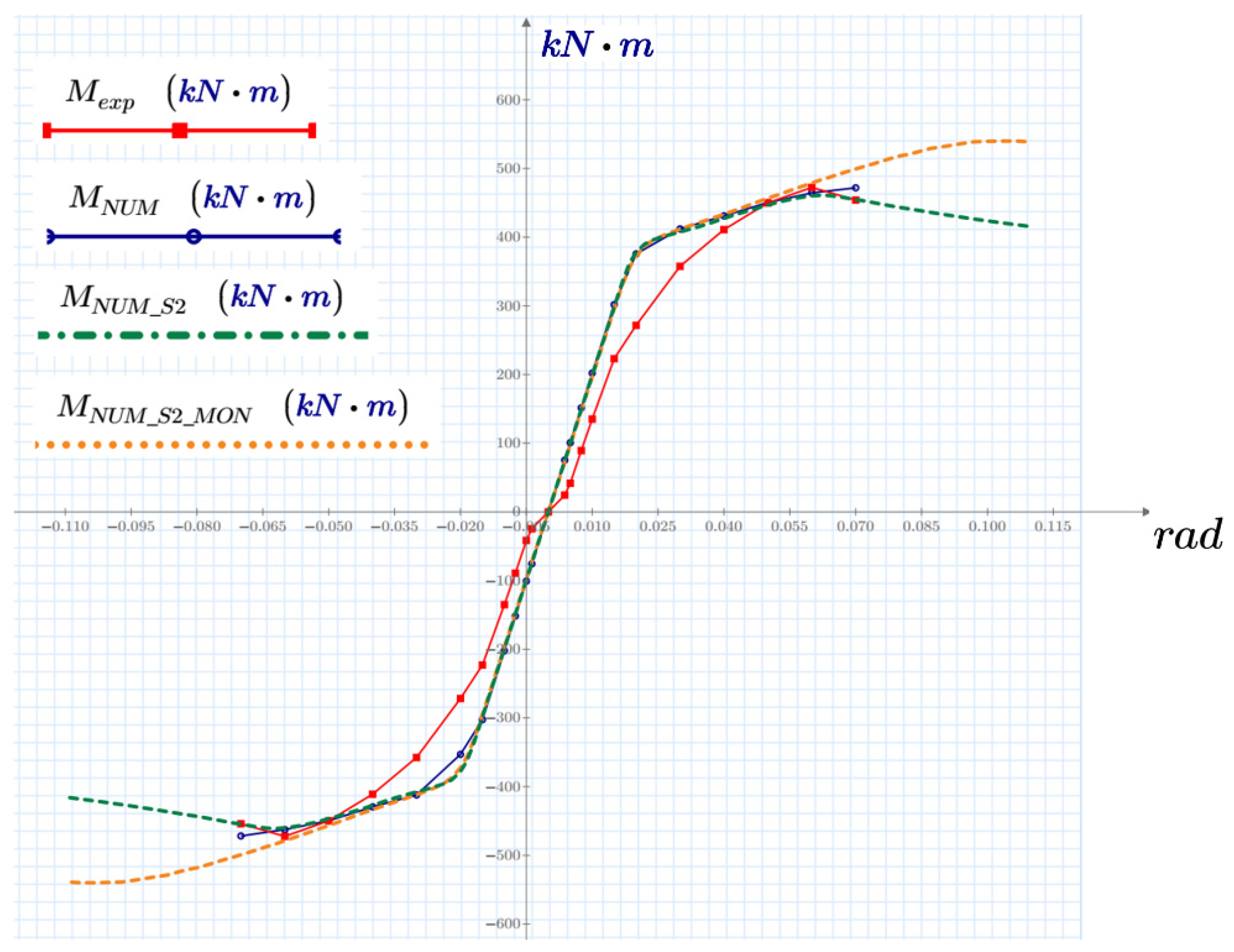


| Value for Each Profile | ||||||
|---|---|---|---|---|---|---|
| Notation | Description | Unit | IPE 330 | IPE 400 | IPE 450 | IPE 500 |
| Beam profile web length | mm | 330 | 400 | 450 | 500 | |
| Column outer diameter | mm | 273.1 | 323.9 | 377.9 | 377.9 | |
| Column wall thickness | mm | 9.3 | 10 | 11.1 | 11.1 | |
| Diaphragm outer diameter | mm | 407 | 484 | 563 | 563 | |
| Diaphragm thickness | mm | 15 | 19 | 22 | 25 | |
| Bolt diameter | mm (in) | 15.88 (5/8) | 15.88 (5/8) | 19.05 (3/4) | 19.05 (3/4) | |
| Number of bolts | - | 12 | 16 | 14 | 14 | |
| Plastic module of the beam | cm3 | 804 | 1307 | 1702 | 2194 | |
| Concrete strength | MPa | 21 | 21 | 21 | 42 | |
| Beam yield strength | MPa | 350 | 350 | 350 | 350 | |
| Modulus of elasticity of steel | MPa | 200,000 | 200,000 | 200,000 | 200,000 | |
| Profile | 0.8 Mp (kN-m) | Resistant Moment (kN-m) | Plastic Hinge Location (mm) | Qualification Verdict (Yes/No) |
|---|---|---|---|---|
| IPE 330 | 224.5 | 328.5 | 403 | yes |
| IPE 400 | 365.7 | 535.4 | 518 | yes |
| IPE 450 | 476.6 | 711.9 | 526 | yes |
| IPE 500 | 613.8 | 885.5 | 542 | yes |
Publisher’s Note: MDPI stays neutral with regard to jurisdictional claims in published maps and institutional affiliations. |
© 2022 by the authors. Licensee MDPI, Basel, Switzerland. This article is an open access article distributed under the terms and conditions of the Creative Commons Attribution (CC BY) license (https://creativecommons.org/licenses/by/4.0/).
Share and Cite
Ramírez Ortiz, C.; Gutierrez Amador, A.D.; Ramírez Duque, J.L. Numerical Analysis of the Seismic Behavior of a Steel Beam-to-Concrete-Filled Steel Tubular Column Connection Using External Diaphragms. Buildings 2022, 12, 1217. https://doi.org/10.3390/buildings12081217
Ramírez Ortiz C, Gutierrez Amador AD, Ramírez Duque JL. Numerical Analysis of the Seismic Behavior of a Steel Beam-to-Concrete-Filled Steel Tubular Column Connection Using External Diaphragms. Buildings. 2022; 12(8):1217. https://doi.org/10.3390/buildings12081217
Chicago/Turabian StyleRamírez Ortiz, Cristhian, Albio D. Gutierrez Amador, and Jose L. Ramírez Duque. 2022. "Numerical Analysis of the Seismic Behavior of a Steel Beam-to-Concrete-Filled Steel Tubular Column Connection Using External Diaphragms" Buildings 12, no. 8: 1217. https://doi.org/10.3390/buildings12081217
APA StyleRamírez Ortiz, C., Gutierrez Amador, A. D., & Ramírez Duque, J. L. (2022). Numerical Analysis of the Seismic Behavior of a Steel Beam-to-Concrete-Filled Steel Tubular Column Connection Using External Diaphragms. Buildings, 12(8), 1217. https://doi.org/10.3390/buildings12081217






